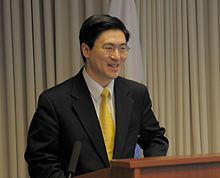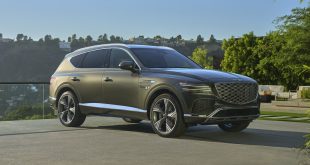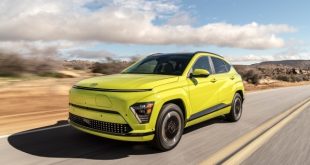By Jennie L. Ilustre

Mung Chiang’s appointment as the first Asian American president of Purdue University in its 153-year history is “an inspirational thing,” according to the chairman of the board of trustees, which made the unanimous decision.
Chiang, 45, dean of engineering since 2017, started in his new post in January. He was named the next president of Purdue University in June last year, succeeding Mitch Daniels.
Chiang has Washington experience. He served as the science and technology adviser to the U.S. secretary of state from 2019 to 2020.
Chiang, originally from Tianjin, China, said he is “an immigrant who I guess is a living demonstration of the American dream,” according to the Purdue Exponent report by Val Ellis and James Kling. “I’m a proud American and proud to serve my country, the United States of America, in higher education.”
Remarked community leader Bing C. Branigin: “Chiang’s historic appointment is a wonderful way to begin the New Year. It is welcome news, indeed, in the midst of many incidents of anti-Asian racism. Chiang deserves our congratulations and best wishes that his appointment would raise visibility on this issue.”
Chiang assumed his historic position on January 1, and will continue to serve as Executive Vice President for Strategic Initiatives. His tenure followed a controversial incident where Thomas L. Keon, chancellor of PNW, mocked Asian languages during a winter commencement.
Keon issued an apology, and remains in his post in spite of increasing calls for him from many quarters to step down.
‘Visible Spot’
Michael Berghoff, chairman of board of trustees, was quoted in the Purdue report as saying that it was “helpful that a diverse leader is in a visible spot as the president of the university.”
The board observed candidates for up to three years, the Purdue report added. But when it considered the skill set, it noted Chiang’s skill set “was well-suited” for the direction where Purdue is going: 65% of the university students are in STEM (Science, technology, engineering and math).
The Associated Press reported that Chiang turned down other offers to be president, including from the University of South Carolina. Chiang opted to stay in Indiana for family reasons.
Background
Mung Chiang was born in Tianjin, China and immigrated to Hong Kong and then to the United States, according to the wikipedia. In 1999, he received a B.S. in both electrical engineering and mathematics M.S. in electrical engineering in 2000, and a Ph.D. in electrical engineering in 2003 at Stanford University.
In 2004, Chiang became an assistant professor at Princeton University. Four years later, he became an associate professor with tenure, a professor in 2011, and the Arthur LeGrand Doty Professor of Electrical Engineering in 2013.
In 2015, Chiang, along with Helder Antunes and Tao Zhang, met to discuss the creation of a consortium to promote the standardization of fog computing, resulting in the OpenFog Consortium.
In 2017, Chiang was named dean of the College of Engineering at Purdue University. He was simultaneously appointed the Roscoe H. George Professor of Electrical and Computer Engineering. He is among the youngest in modern history to become the leader of a major college in an American university.
In December 2019, Chiang took a one-year leave of absence to serve as the science and technology adviser to the secretary of state. In 2021, he was named Executive Vice President for Strategic Initiatives at Purdue University while continuing as Dean of College of Engineering.
On June 10, 2022, the Purdue University Board of Trustees announced its unanimous election of Chiang to become the university’s 13th president on January 1, 2023.
 Asian Fortune Your source for all things Asian American
Asian Fortune Your source for all things Asian American




